A successful track record in the 84-year history of BBVA Bancomer
The history of its commitment to Mexico began on October 15, 1932 when a group of 28 people, driven by the vision of Salvador Ugarte Vizcaíno, set up Banco de Comercio S.A. The first headquarters of the Bank located in the center of Mexico City was opened in 1936 and before the decade ended it already had correspondents in Chicago and New York.

In 1956 –a year that registered a key acceleration in the country's economy and change was brought about by the transformation of the Banco de Comercio network– all the subsidiaries in the states joined to create a consolidated institutional image.
A far-reaching change took place in 1957 with the appointment as General Manager of Manuel Espinosa Yglesias. The business vision and the potential of the Mexican and world economies consolidated Bancomer as one of the soundest banks in the country.
In view of the imminent growth ahead, the bank was a pioneer in the implementation of computer systems in its operations and transactions. The automation of the payment processes began in 1967. In 1969, Banco de Comercio launched its first credit card.
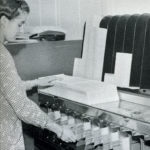
1967, Bancomer starts the first automation of payment process system in Mexico. - BBVA Bancomer
In 1970, a period of significant growth for the institution began. Local growth and the presence abroad were consolidated with new representative offices and, as part of its commitment to employees, the Training Center, the first of its kind, was opened.
November 18, 1977 saw the culmination of a dream and the banks in the network of Bancos de Comercio del Sistema, Financiera Bancomer and Hipotecaria Bancomer, merged to create Bancomer, S.A. as a commercial banking institution. Bancomer was set up as a Group with an Insurance Company, a Financial Lender, a Brokerage House and a Real-estate Company. It also had 587 branch offices in the country, a branch in Angeles, California, and offices in London, Madrid, Tokyo and New York.
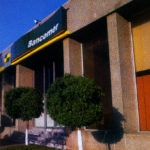
1977, Bank of Commerce becomes Bancomer. - BBVA Bancomer
As part of the celebration of the Bank's strength, the construction of Centro Bancomer began in 1979. It was one of the most innovative buildings at the time, as it centralized all the operations in a single headquarters. Construction work was completed in 1980.
On September 1, 1982, a Presidential Decree implemented the expropriation of banking and Bancomer became a National Credit Company and was handed over to the government.

1982, Centro Bancomer. - BBVA Bancomer
A milestone was achieved in 1985 with the launch of the first debit card in Mexican banking, which revolutionized the handling of cash in a secure way.
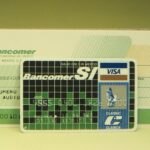
1985, launch of Bancomer Si, the first debit card on the Mexican market. - BBVA Bancomer
In 1991, Bancomer took a new turn when a business group acquired the Bank after the nationalization period and Bancomer once again became a private institution. In October 1991, the government re-privatized banks and the Valores de Monterrey S.A. consortium, an organization headed by Eugenio Garza Lagüera, won the auction for the acquisition of Bancomer.
Between February and March 1992, the Bancomer Grupo Financiero financial group was legally established, made up of five institutions. The Bank went through a major innovation period, particularly with a new strategic model and with significant improvements in operations.
In 1994, the new strategic model led to a reorganization of the banking model with the aim of improving operations by promoting growth in branch office and ATM networks.
The same year, in the face of the financial crisis, Bancomer took emergency steps to protect the interests of its customers and looked for a foreign partner. Thus, on March 29, 1996 Grupo Financiero Bancomer and Bank of Montreal announced that the latter would acquire 16% of the Grupo Bancomer Group.
During this five-year period, Afore Bancomer consolidated its position as one of the leading Fund Managers in Latin America, and also launched services such as Telebanco (home banking) and Bancomer por Teléfono (phone banking). In this new scenario it opened its branch office number 1,000, the first bank in Mexico to reach that figure.
2000: BBVA Bancomer is born
The history of success was confirmed in July 2000, when Banco Bilbao Vizcaya Argentaria (BBVA) capitalized Bancomer with USD 1.4 billion and created Grupo Financiero BBVA Bancomer (GFBB) through the merger of Grupo Financiero BBV-Probursa with Grupo Financiero Bancomer and Banca Promex. El Libretón was one of the 'star' products in fund gathering.
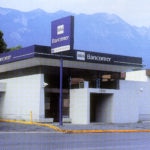
2000, BBVA Bancomer changes its corporate image. - BBVA Bancomer
In June 2002, Grupo Financiero BBVA Bancomer became a subsidiary of Banco Bilbao Vizcaya Argentaria (BBVA) as a result of the latter's acquisition of over 51% of the Group's capital stock.
With the aim of starting a stage geared toward becoming the best bank in Mexico, Proyecto Cliente (Customer Project) was implemented in 2002.
In 2005, Hipotecaria Nacional was incorporated to the financial statements of the BBVA Financial Group. On August 19, BBVA was listed on the Mexican Stock Market and became the first European group registered on the stock exchange. In late 2005, thanks to its winning strategy, BBVA Bancomer became the leader in several areas.
In 2006, the BBVA Bancomer Foundation started granting scholarships with the 'Por los que se quedan' (For those left behind) Program. The Winner Card, targeted at children and young people, was launched in 2007; a special mortgage product for young people, Hipoteca Joven, was launched that same year.

2006, launch of the 'Por los que se quedan' scholarship program for secondary education students. - BBVA Bancomer
In 2008, the bank presented the Financial Literacy Program 'Adelante con tu futuro' (Forward with your Future) and in 2009 BBVA Bancomer chose Richard Rogers and Ricardo Legorreta to design and build the three new headquarters in Mexico City. The banking correspondent scheme was also implemented.
In 2010, BBVA Bancomer started marketing the first mobile account for banking transactions using a smartphone. In 2011 it launched Cuenta Express (Express Account) and Bancomer Móvil (Bancomer Mobile), two products based on technological innovation.
2011 was marked by two significant events: the announcement of a USD 2 billion investment plan and two awards by the Inter-American Development Bank to the Financial Inclusion Program 'Adelante con tu futuro'.
In 2012 it launched Dinero Móvil (Mobile Money) for sending deposits to a smartphone and withdrawing them at an ATM.
In 2013, Francisco González, Group Executive Chairman of BBVA Group, announced before the Mexican President an investment program worth USD 3.5 billion to back the construction of the new headquarters and technological modernization. That same year it began to sponsor the Mexican soccer league with Bancomer Mx.
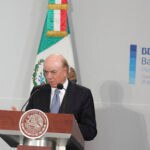
2013, Francisco González announces before the Mexican President the BBVA-Presidency investment plan for USD 3.5 billion. - BBVA Bancomer
In 2014, BBVA Bancomer set up the Digital Banking Division and El Celler de Can Roca paid tribute to Mexican gastronomy, while the BBVA Bancomer Foundation and the Ministry of Education doubled the number of 'Adelante' scholarships.
In 2015, the BBVA Bancomer Foundation and Liga Bancomer Mx put into motion 'Balón de la Educación' (Education Ball); BBVA Wallet was launched; Wibe became the first insurance product sold through digital channels; and the largest corporate move in Latin America began, to occupy the new BBVA Bancomer headquarters in Mexico City.
In 2016, the Mexican President Enrique Peña Nieto opened the Bancomer Tower and in March of the same year the BBVA Bancomer Innovation Center, the first of its kind in a banking corporation, started operations.
This is how a success story has been build over a period of 84 years, turning BBVA Bancomer into the leader in Mexico's financial sector, supporting the country's development through its firm commitment over more than eight decades.

2016, opening of the BBVA Bancomer Tower. - BBVA Bancomer